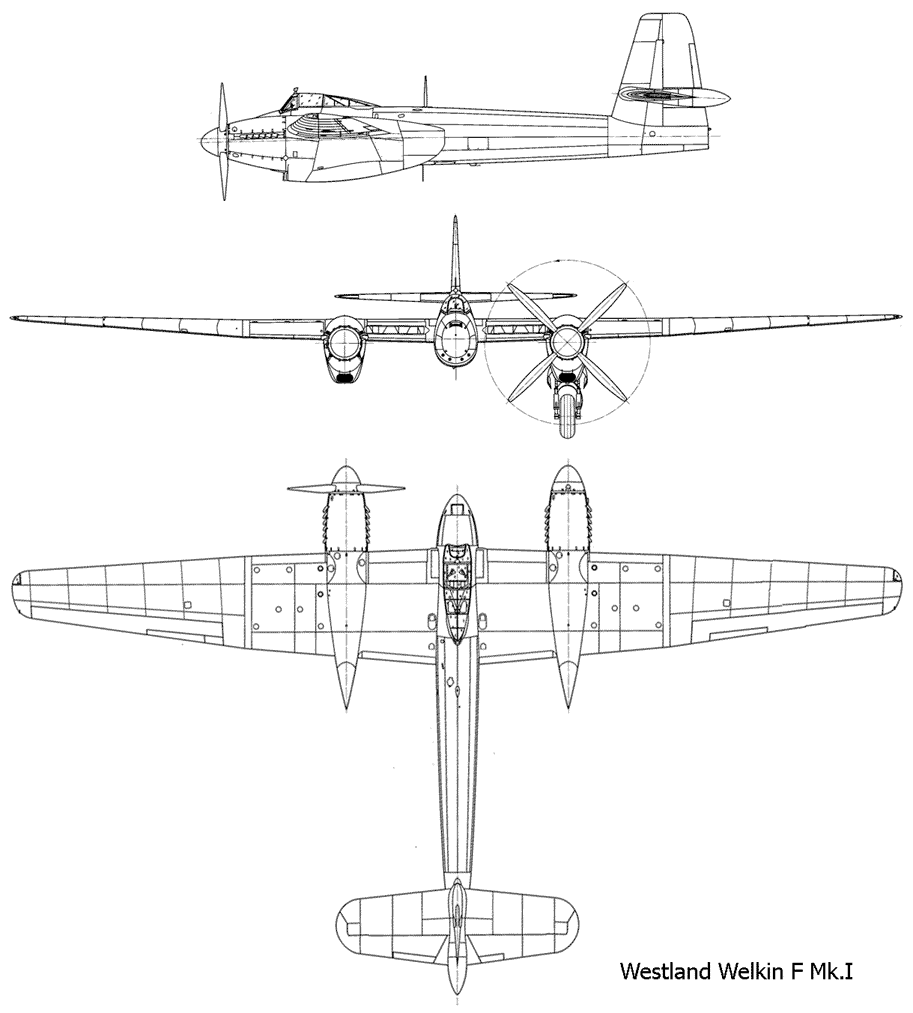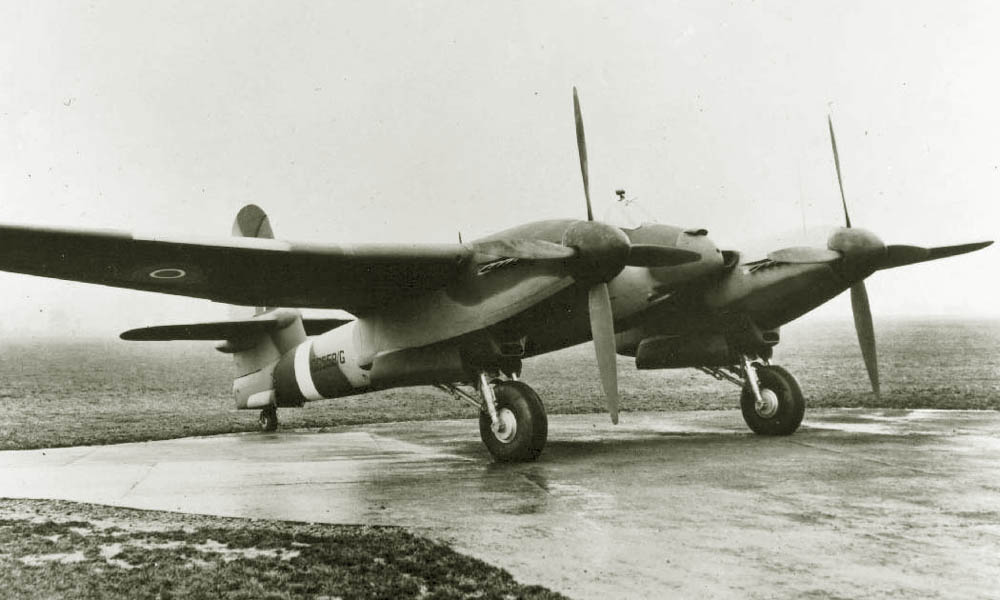|
However, the German threats to bombard England from high altitudes were never carried out. At first, Welkin was planned to be used as a high-altitude long-range reconnaissance aircraft with a flight range of up to 2,900 km, then there was a plan to transform it into a high-altitude fighter-bomber capable of carrying up to 1,800 kg of bombs on an external sling. However, no one knew why a fighter-bomber with a ceiling of up to 13,500 m was needed. The most developed was the project of a two-seater night fighter, designated Welkin NF Mk.II. An Al Mk.VIII radar antenna was placed under the radio-transparent fairing, above the cannons, and the extended nose of the fuselage made it possible to place an operator behind the pilot. The model of the aircraft was inspected on May 13, 1943, after which a number of improvements followed. Two experienced Welkin NF Mk.IIs were ordered - which were converted from the Mk.I. It was also planned to convert all production Mk.Is under the second contract into night fighters - only 60 machines, but only one Mk.II was built. In May 1944, two Welkin Mk.I fighters nevertheless hit part of the British Air Force interceptor fighters in Wittering for two months, but their tests ended simultaneously with a complete loss of interest in this aircraft.
A total of 75 production aircraft were built and 26 more without engines. Although not a single aircraft entered service, the Welkin went down in British Air Force history as the first fighter with a pressurized cabin. This experience was subsequently useful to the British aircraft industry in the construction of jet aircraft.
 |
Drawing Westland Welkin F Mk.I
|
 |
Drawing Westland Welkin NF Mk.II
|
 |
Westland Welkin F Mk.I
|
Bibliography

- "New Aircraft Types", /Flight, p. 664, 21 June 1945/
- "British Secret Projects: Fighters and Bombers 1935–1950." /Buttler, T. 2004/
|






